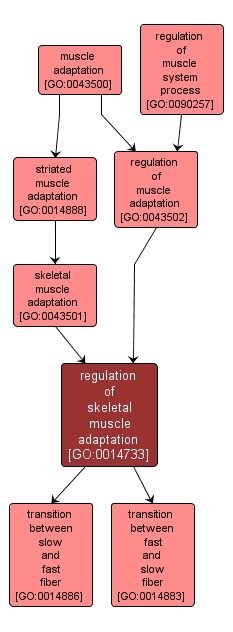| Desc: |
Any process by which skeletal muscle adapts, with consequent modifications to structural and/or functional phenotypes, in response to a stimulus. Stimuli include contractile activity, loading conditions, substrate supply, and environmental factors. These adaptive events occur in both muscle fibers and associated structures (motoneurons and capillaries), and they involve alterations in regulatory mechanisms, contractile properties and metabolic capacities. |














